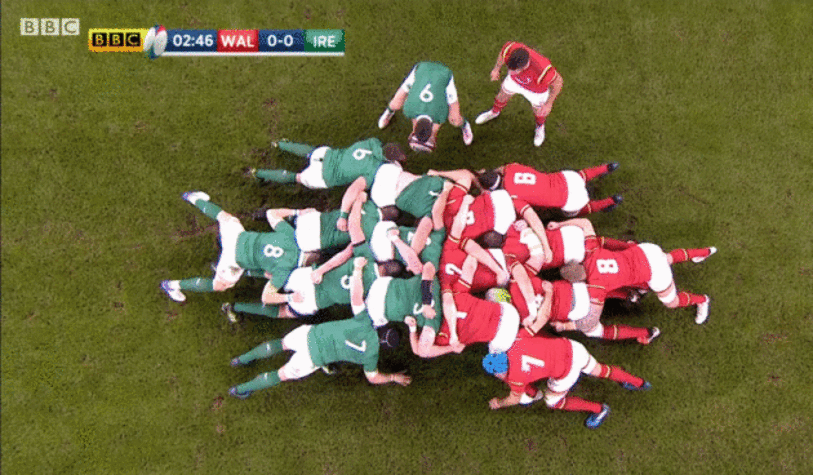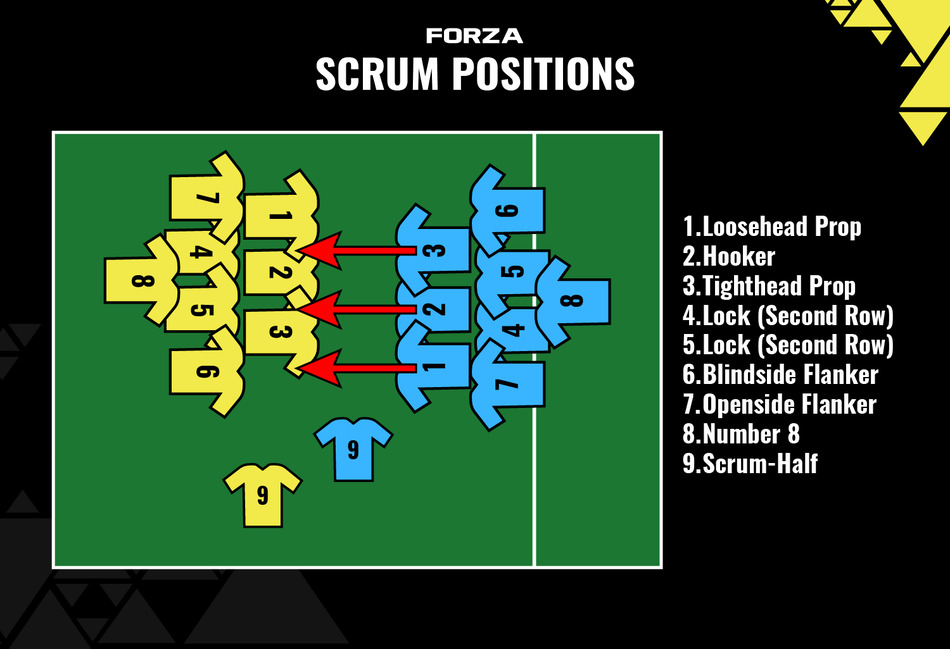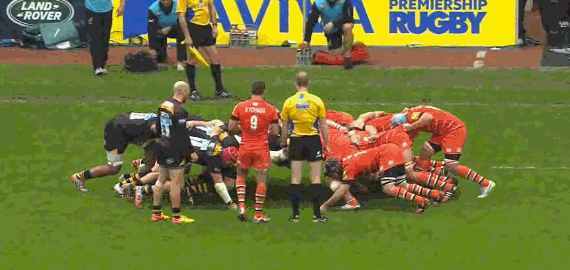Officially called “the scrummage”, many famous rugby teams have been renowned for the strength of their scrum, and their ability to win games thanks to their superiority in this aspect of the game.
Whilst it looks like a contest of brute-force, the scrum is one of the most technical elements of rugby, with the intricacies not fully understood by many spectators. In this blog post we will look to explain the rules of the scrum as clearly as possible, so that next time you are watching a match, you have a better idea of what is going on.
Basic Rules of the Scrum
What is the purpose of a scrum in rugby union?
Some of the fundamental aspects and rules of the scrum are listed below:
- It’s a way of restarting play after a minor infringement or the ball is out of play.
- It involves the designated forwards of both teams, which is 16 players in total (8 from each side).
- The ball gets fed in the middle of the scrum by the scrumhalf towards the hooker, who tries to try to win possession by kicking backwards towards their teammates, who then put all the force together to drive the scrum forwards.
The image below shows a scrum during a Six Nations match between Wales (red) and Ireland (green). The scrum has been awarded to Ireland, and their scrum half is about to feed the ball into the scrum, towards the hooker:

When is a scrum awarded?
Statistics show that around 20 scrums take place per international match. A scrum is awarded for a minor infringement of the rules, including:
- Accidental knock on – when the ball is dropped or knocked forwards
- Forward pass
- Unplayable ball in a ruck or maul – when the ball gets ‘trapped’
- Incorrect play at the lineout – for example not throwing the ball straight
- Incorrect Kickoff – e.g. if the ball travels less than 10 metres
- Unplayable ball in the In-Goal Area – for example, if multiple players dive on a loose ball, without a try being scored
The team that is awarded a scrum has the advantage and is more likely to emerge with the ball. Their scrum-half feeds the ball into the scrum, giving his teammates the initial opportunity to retain possession of the ball.
As 8 players from each side partake in the scrum, a lot of space is freed up within the rest of the pitch, which allows an attacking team to exploit any defensive gaps with quick and precise passes from the scrum half.
Which players are involved in a scrum?
A team’s 8 forward players are involved in a scrum. Although there is no rule that specifies that this has to be the case, the 8 forwards are virtually always the players that make up the scrum from each team. This makes a forward’s ability and effectiveness in the scrum, an important aspect of their role.
The forwards organise themselves into 3 rows as follows:
Front Row
- Loosehead Prop
- Hooker
- Tighthead Prop
Second Row
- Openside Flanker
- Lock (number 4)
- Lock (number 5)
- Blindside Flanker
Third Row
- Number 8

Why are scrums dangerous?
Rugby Union rules allow both teams to attempt to push or drive the opposition backwards, so they win possession of the ball. This is what makes scrums amazing to watch and also pretty dangerous.
Below is an example of an old-style scrum. The players would collide at great speeds, which looked great for the spectator but ultimately was outlawed as it put too much strain on the forwards.

With rugby union governing bodies trying to decrease the injury rate during the scrum, changes had to be made. As of the 2013/14 rugby season, players must now follow a set of orders from the ref that includes their shoulders touching and a pause to prove the players are steady before they engage with force.

The new method of starting a scrum reduces the impact on players and also means the scrum is less likely to collapse. Statistics show that injuries received during scrums have been dramatically reduced thanks to the changes made to this process of engagement. But as you can see from how that scrum collapses in the image above, the scrum is still pretty rough and just the strength of the players alone can force it to tumble.
If you are a rugby player looking to increase your strength and power in the scrum, then building lower body strength and overall muscle mass is a great place to start. It’s fair to say that the vast majority of professional rugby forwards spend a large amount of time building power using gym equipment such as squat racks, and developing rugby specific strength using rugby tackle bags.
By: Andrew Griffiths
